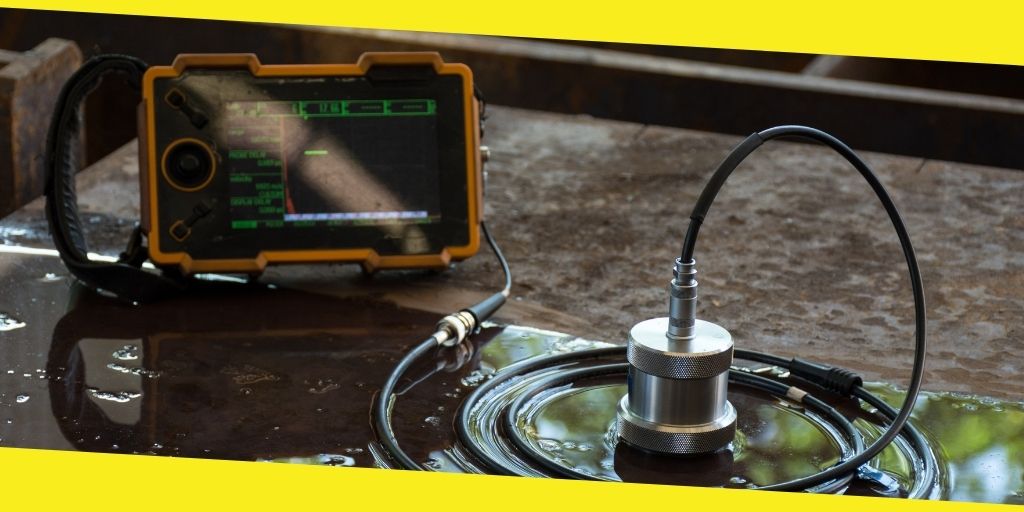A Career Roadmap for Non-Destructive Testing Graduate

Non-Destructive Testing (NDT) involves a series of analytical techniques used to evaluate vessels and their parts, and it’s used in various industries involving energy, oil and gas, nuclear, aerospace, transportation, and power. For this reason, job opportunities are available for someone with this background.
Contents
TogglePre-training Research
There are different branches of NDT, and someone planning to make a career in it would have to understand these different types:
-
Leak Testing (LT)
Leak testing involves detecting the presence of leaks in vessels. It identifies pressure changes, which result in a vacuum and pressurizes the sealed vessel. The bubble method uses the aspect of pressurizing where the vessels are immersed in a fluid; if bubbles are released, one can detect the specific leak point. Less pressure in the vessel’s parts also indicates a leak.
-
Vibration Analysis (VA)
Vibration analysis involves testing the tenacity of rotation parts such as the shafts and gears. It uses velocity sensors, accelerometers, and Eddy current displacement sensors. Velocity sensors generate electric fields from the parts using a magnet. On the other hand, accelerometers detect high frequencies and are used in high-speed applications while Eddy current displacement sensors detect changes in shaft motion.
-
Ultrasonic Testing (UT)
It’s the most commonly used method in NDT as it detects irregularities such as void in solid objects by inducing high-frequency.
-
Laser Testing Methods (LM)
Laser testing uses three techniques, namely shearography, profilometry, and holography testing. Shearography detects lows in vessel parts, profilometry identifies tracks in pipes with the use of a spinning laser to view the external surfaces, while holography is similar to shearography but uses different equipment
-
Eddy Current Testing (ECT)
It’s used to detect changes in material properties by using magnetic fields to form images of vessel parts.
Before taking the Non-Destructive Testing Technology & Quality Control Management program, it would be best to familiarize yourself with most of these methods to level your expectations with the degree.

Training
NDT isn’t a walk-over course as the training requires taking in a large chunk of information and gain exposure and experiences in different skills using the methods. Up-to-date training is used to ensure one’s qualification since any error could lead to disaster. This helps one when it comes to deciding the employment level they want.
During the training, students absorb theoretical, visual acuity, and color vision knowledge. To get a good start, the prospective trainee can take up mathematical exams to prepare for the course load.
In most cases, the trained personnel have to be certified following the International Organization for Standardization (ISO) 9712. The training is divided into three components such as the apprentice, journeyman, and master-level. The following are levels of certification:
-
Level 1
At the apprentice level, the trainee is expected to demonstrate their proficiency in at least one of the NDT methods such as Eddy current testing. The technicians should be able to monitor and evaluate different vessel parts and document the evaluation outcomes. Higher-level technicians supervise level 1 trainees.
-
Level 11
At the journeyman level, students are expected to have an advanced understanding of the strengths and weaknesses of NDT methods and demonstrate this understanding. They should be able to set up and calibrate equipment, interpret the results, and have the capacity to supervise Level 1 technicians and create reports.
-
Level 111
The master-level technicians have the understating to develop NDT strategies for Level 1 and 11 technicians. They can recommend equipment to be used in designated methods and develop standards if there are none. They can also supervise the lower-level technicians.
Trainees have to show their proficiency in written and practical examinations before they’re certified. For safety purposes due to the sensitivity of the profession, a technician is expected to renew their training once in a while by taking the course and doing examinations.
Employment Search
The demand for NDT technicians is high, and professional technicians receive job offers once they’re done with their training. Trainers ensure they’re certified as this helps them get good offers aside from the knowledge they’ve gained.
Takeaway
Someone planning to get into NDT should do some research on what it entails. Taking mathematical examinations is also a good start to prepare one for the course itself. There are different methods to be taught during the training, and one is expected to be proficient in one method to be a level 1 technician.
Once the training is done, they can expect to receive job offers if they’re certified. Lastly, they should constantly renew their knowledge in NDT for safety purposes.
Recommended For You
How to Write the Most Perfect Essay?
Most Inside
Most Inside offers high-quality recommendations and valuable updates to enhance all aspects of your life, providing premium guidance and enriching experiences.




